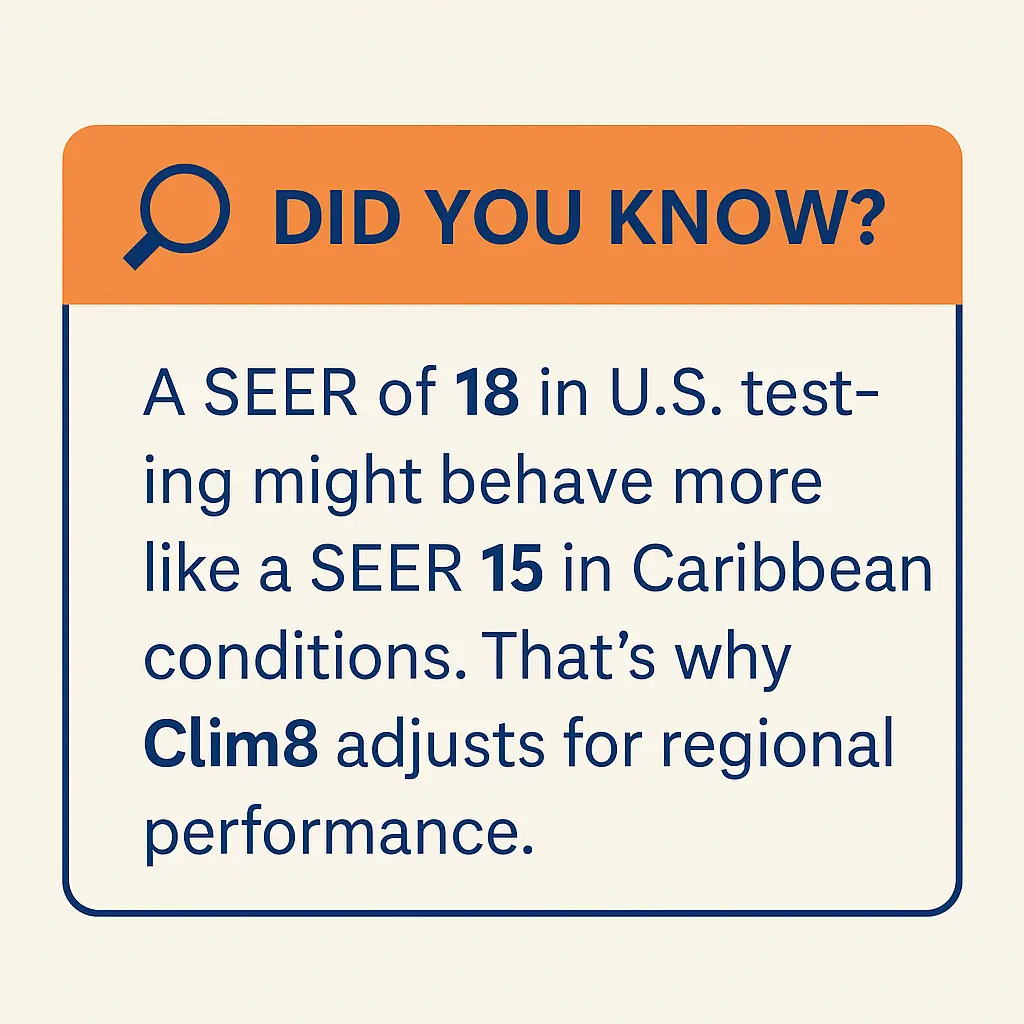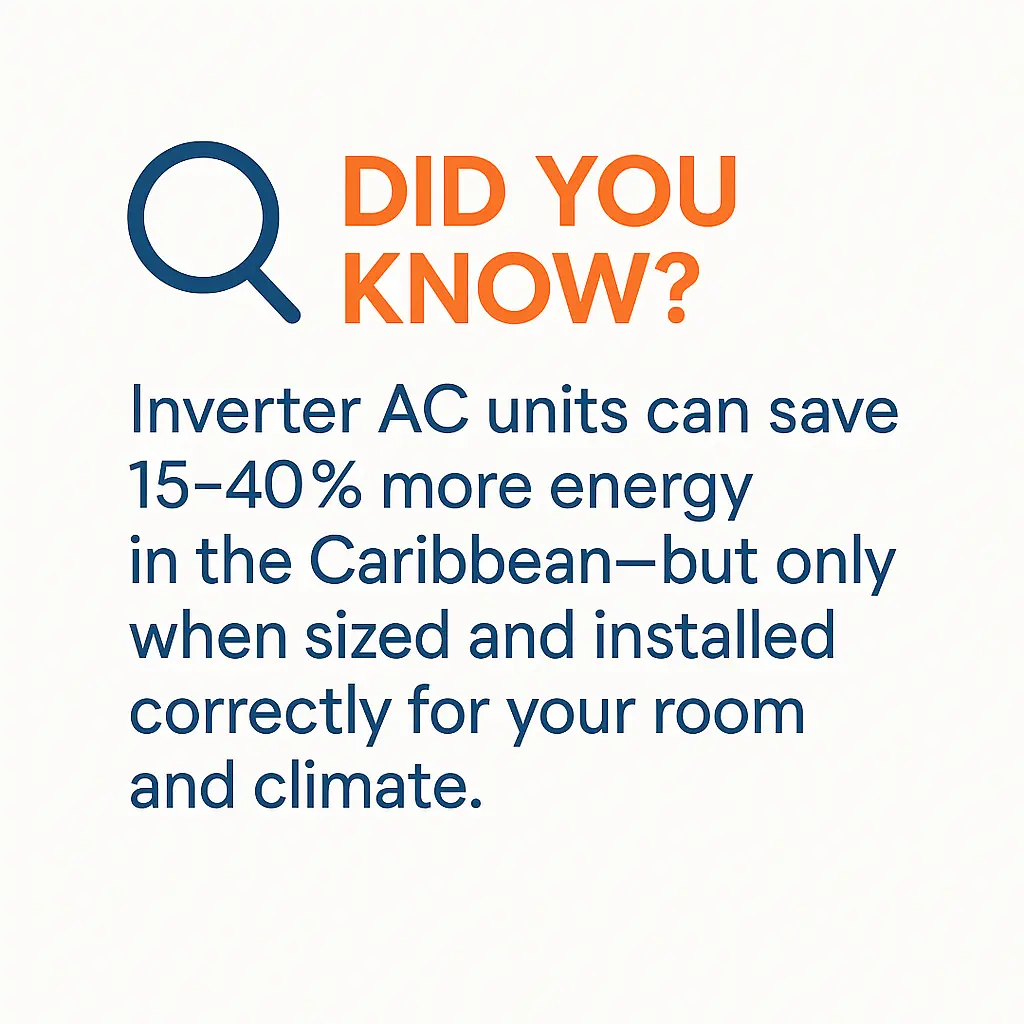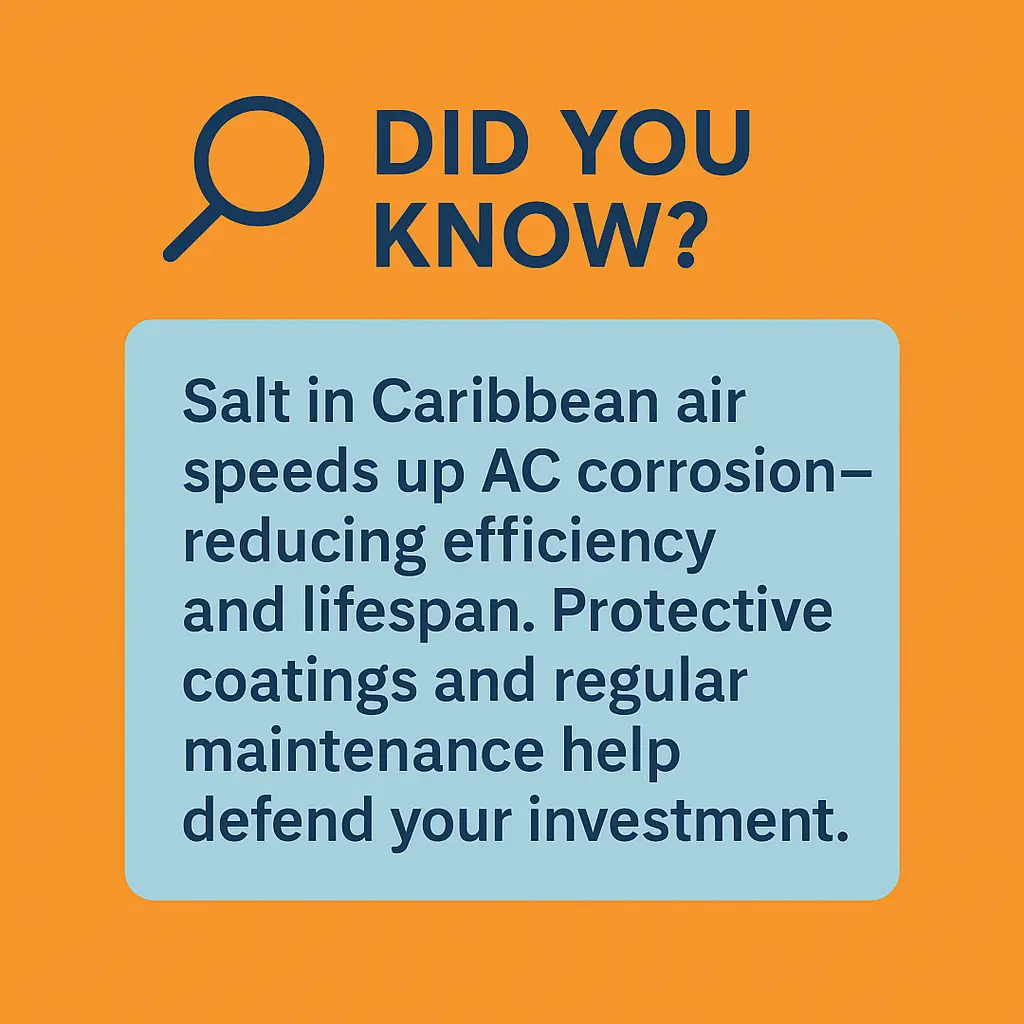In Dominica and across the Caribbean, where the sun blazes, humidity clings, and power can fluctuate, how you use your air conditioner can make a world of difference. But here’s the thing—most A/Cs offer more than just “on” or “off.”
If you’ve ever stared at your remote and wondered what all those icons mean—triangle, snowflake, fan blade, droplet, sun—you’re not alone. These symbols represent the 5 essential A/C modes that can shape your comfort, energy efficiency, and indoor air quality.
Let’s walk through each one—not just what it does, but how it behaves in our Caribbean climate.
 Auto Mode (Three Arrows in a Triangle)
Auto Mode (Three Arrows in a Triangle)
Auto Mode is your A/C’s “autopilot.” It senses the room conditions and automatically switches between cooling, drying, and fan modes to keep the temperature comfortable.
When to use it:
- If you want the A/C to manage the settings for you.
- During moderate days where conditions aren’t extreme.
In the Caribbean:
- Great for early mornings or shaded rooms.
- Can struggle during quick shifts in humidity—like when a storm rolls in or the sun hits your west-facing wall.
Use this mode with Clim8 Comfort Planner to adjust automatically for peak comfort.
❄ Cool Mode (Snowflake Symbol)
This is your standard “get the room cold” setting. The compressor kicks in to drop the temperature to your set level.
When to use it:
- Hot afternoons
- Living areas with direct sunlight
In the Caribbean:
- Effective—but power-hungry.
- If your air conditioner is too big for the room, it might cool too fast without removing humidity, leaving the air clammy.
This is the most commonly used A/C mode in the region.
 Dry Mode (Single or Triple Water Droplet)
Dry Mode (Single or Triple Water Droplet)
Dry Mode is your humidity assassin. It pulls moisture out of the air without aggressively cooling the space.
When to use it:
- Rainy days
- Muggy mornings or evenings
In the Caribbean:
- One of the most energy-efficient A/C settings.
- Great for preventing mold, especially in unoccupied guest rooms or storage areas.
- Helps reduce wear on your unit and electricity costs.
 Fan Mode
Fan Mode
This mode simply moves air around. The compressor stays off, so it doesn’t cool the room.
When to use it:
- Breezy evenings when it’s cool enough
- With open windows for cross-ventilation
In the Caribbean:
- Not ideal in humid conditions—it’ll feel like warm wind.
- Still useful as a backup during power-saving times.
 Heat Mode (Radiant Sun Symbol)
Heat Mode (Radiant Sun Symbol)
Yes, your A/C can heat too! (Available only on Heat Pump models—not all A/Cs include this.) Heat Mode reverses the system to bring warmth indoors.
When to use it:
- Early mornings in mountain villages
- Cooler dry-season nights
In the Caribbean:
- Rarely used, but comforting if your home is shaded, elevated, or breeze-prone.
- Much more efficient than plug-in heaters.
What Makes Caribbean Use Unique?
| Local Challenge | Mode Most Affected | What to Expect |
|---|---|---|
| High humidity | Fan Mode | Leaves the air damp—no dehumidifying effect |
| Power fluctuations | Cool & Heat Modes | May trigger safety shutdowns or board failure |
| Small sealed rooms | Cool Mode | Cools fast but traps moisture |
| Mountain breezes | Heat Mode | Actually helpful in shaded or high-altitude homes |
Clim8’s Take on A/C Modes in the Caribbean
Understanding your air conditioner’s settings is one of the best energy-saving tips for the Caribbean climate. It means:
- More comfort for less electricity
- Better indoor air quality
- Longer-lasting equipment
- Lower maintenance costs in a high-humidity zone
Try this:
- Use Dry Mode before bed on humid nights.
- Let Auto Mode handle mornings, then switch to Cool by midday.
- Protect your system with voltage guards—especially in surge-prone areas.
Still not sure which A/C mode is right for you—or if your current unit is even suited for our climate?
Clim8 is here to guide you, service your system, or help you upgrade with Caribbean comfort in mind.
👉 Contact us or use our Comfort Planner to start the conversation.


